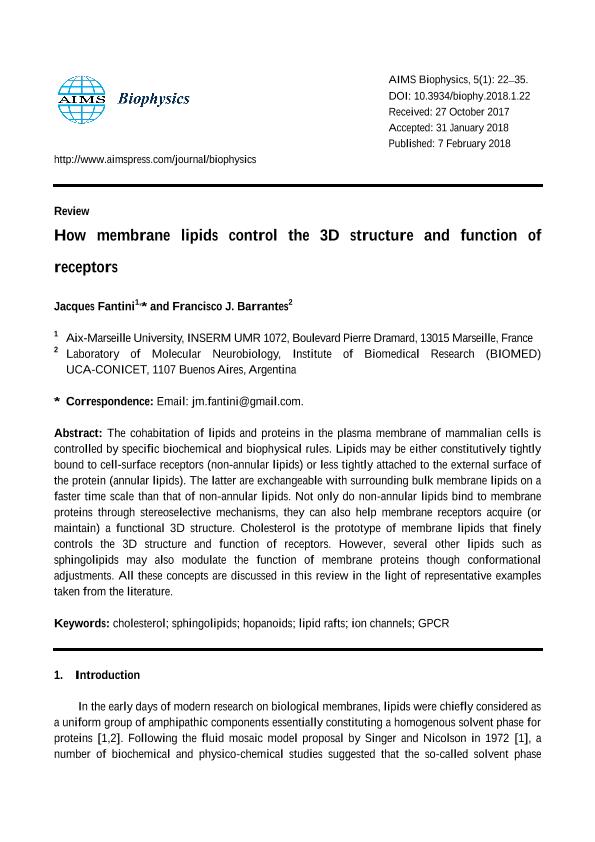Artículo
How membrane lipids control the 3D structure and function of receptors
Fecha de publicación:
03/2018
Editorial:
American Institute of Mathematical Sciences
Revista:
AIMS Biophysics
ISSN:
2377-9098
Idioma:
Inglés
Tipo de recurso:
Artículo publicado
Clasificación temática:
Resumen
The cohabitation of lipids and proteins in the plasma membrane of mammalian cells is controlled by specific biochemical and biophysical rules. Lipids may be either constitutively tightly bound to cell-surface receptors (non-annular lipids) or less tightly attached to the external surface of the protein (annular lipids). The latter are exchangeable with surrounding bulk membrane lipids on a faster time scale than that of non-annular lipids. Not only do non-annular lipids bind to membrane proteins through stereoselective mechanisms, they can also help membrane receptors acquire (or maintain) a functional 3D structure. Cholesterol is the prototype of membrane lipids that finely controls the 3D structure and function of receptors. However, several other lipids such as sphingolipids may also modulate the function of membrane proteins though conformational adjustments. All these concepts are discussed in this review in the light of representative examples taken from the literature.
Palabras clave:
CHOLESTEROL
,
GPCR
,
HOPANOIDS
,
ION CHANNELS
,
LIPID RAFTS
,
SPHINGOLIPIDS
Archivos asociados
Licencia
Identificadores
Colecciones
Articulos(BIOMED)
Articulos de INSTITUTO DE INVESTIGACIONES BIOMEDICAS
Articulos de INSTITUTO DE INVESTIGACIONES BIOMEDICAS
Citación
Fantini, Jacques; Barrantes, Francisco Jose; How membrane lipids control the 3D structure and function of receptors; American Institute of Mathematical Sciences; AIMS Biophysics; 5; 1; 3-2018; 22-35
Compartir
Altmétricas




